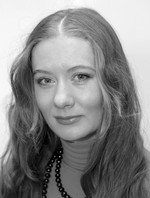Issues of anthropometrics versus health condition correlations in male students of special health group
Фотографии:
ˑ:
Fizicheskaya kultura: vospitanie, obrazovanie, trenirovka №6 2016, pp.56-59
PhD K.V. Sukhinina1
E.I. Gordeeva1
Postgraduate O.Y. Aleksandrovich1
1Irkutsk State University, Irkutsk
Subject to the study were the body mass components of the first-year students qualified for the special health group versus that of the Reference Group. The students’ anthropometrical measures were taken twice a year in autumn (prior to Semester I) and spring (after the academic year). Subject to the study were 60 first-year male students from six departments of Irkutsk State University. The study found the body component indices being significantly different in the Reference Group versus the Study Group. The students diagnosed with vegetative-vascular dystonia were tested with the lowest muscular and bone mass indices and the highest fat mass indices. Objective of the study was to find correlation of the body components versus the health conditions of the male students qualified for the special health group.
Keywords: anthropometric measures, fat mass, bone mass, muscular mass, male students, special health group.
References
- Avrunin A.S. Formirovanie i perestroyka mineral'nogo matriksa kostnoy tkani (Obzor literatury i sobstvennye dannye) (Formation and transformation of mineral bone matrix (literature review and personal data) / A.S. Avrunin, N.V. Krnilov, I.D. Ioffe // Osteoporoz i osteopatii. – 2000. – № 3. – P. 6-9.
- Akyeva N.K. Anatomo-antropometricheskie pokazateli fizicheskogo statusa u muzhchin yunosheskogo vozrasta (Anatomic and anthropometric indices of physical status of male adolescents) / N.K. Akyeva, L.A. Evlakhova, G.R. Sarkhanidze et al. // Sistemny analiz i upravlenie v biomeditsinskikh sistemakh. – 2015. – V. 14. – № 1. – P. 87-90.
- Kolesnikova L.I. Osobennosti gormonal'no-metabolicheskikh pokazateley u devochek 8-12 let s razlichnymi variantami techeniya gipotalamicheskogo sindroma (Features of hormonal and metabolic indices in girls of 8-12 years old with different variants of hypothalamic syndrome) / L.I. Kolesnikova, V.V. Dolgikh, L.V. Rychkova et al // Fundamentalnye issledovaniya. – 2014. – № 5 (P. 4). – P. 744-747.
- Kondrashev A.V. Komponentny sostav tela kak morfologicheskoe otrazhenie adaptatsionnykh vozmozhnostey organizma cheloveka (Chemical composition of the body as morphological reflection of adaptive capabilities of the human body) / A.V. Kondrashev, E.V. Chaplygina, E.V. Kharlamov / Eskulap pub. 0004-1947, 2008. – № 2. – P. 66a.
- Pashkova I.G. Teloslozhenie i komponentny sostav tela yunoshey s uchetom psikhologicheskoy kharakteristiki lichnosti v usloviyakh severa (Body build and chemical composition of the body of young men with regard to personality psychological characteristic in northern conditions) / I.G. Pashkova, S.A. Kudryashova, T.A. Kolupaeva, G.P. Belousova // Uch. zapiski SPbGMU im. akad. I.P. Pavlova. – 2011. – V. XVIII. – № 2. – P. 111-112.
- Prokopiev N.Y. Komponentny sostav tela v razlichnye periody ontogeneza (kratkiy obzor literatury) (Chemical composition of the body in different periods of ontogenesis (brief literature review) / N.Y. Prokopiev, M.N. Gurtovaya // Zhurnal nauchnykh publikatsiy aspirantov i doktorantov. – 2013. – № 4 (82). – P. 196-199.
- Sindeeva L.V. Komponentny sostav tela kak pokazatel' fizicheskogo zdorov'ya molodezhi (na primere studentok meditsinskogo VUZa) (Chemical composition of the body as indicator of physical health of young people (case study of medical university students) / L.V. Sindeeva, V.G. Nikolaev, G.N. Kazakova et al. // Vestnik Krasnoyarskogo gosudarstvennogo pedagogicheskogo un-ta im. V.P. Astafieva (Bulletin of Krasnoyarsk State Pedagogical University n.a. V.P. Astafiev). – 2012. – № 1. – P. 398-401.
- Sindeeva L.V. Komponentny sostav kak kriteriy biologicheskogo vozrasta cheloveka (Chemical composition of the body as criterion of human biological age) / L.V. Sindeeva, V.G. Nikolaev, T.F. Kochetova et al. // Sibirskoe meditsinskoe obozrenie. – 2015. – № 5 (95). – P. 61-66.
- Sukhinina K.V. Sootnoshenie kostnoy, zhirovoy i myshechnoy massy tela u studentok s razlichnym vesom tela (statya) (Bone, fat and lean body mass ratio of female students with different body weight (article) / K.V. Sukhinina, L.V. Rychkova, L.V. Suturina et al. // Sibir–Vostok. – 2005. – № 10. – P. 24-25.
- Sukhinina K.V. Dvigatel'naya aktivnost' kak faktor psikhofiziologicheskogo zdorov'ya studentov (statya) (Motor activity as a factor of psycho-physiological health of students (Article): study guide / K.V. Sukhinina. – Irkutsk: ISU pub. h-se, 2009. – 114 p.
- Sukhinina K.V., Bomin V.A. Zdorov'esberegayushchie tekhnologii v sokhranenii i formirovanii zdorov'ya studentov (Health-promoting technologies in protection and formation of students' health): teaching aid / K.V. Sukhinina, V.A. Bomin. – Irkutsk: Megaprint, 2011. – 158 p.
- Sukhinina K.V. Komponentny sostav tela kak pokazatel' fizicheskogo i polovogo razvitiya u studentok s razlichnym vesom tela (Chemical composition of the body as indicator of physical and sexual development of female students with different body weight) / K.V. Sukhinina / In: The 2nd University socio-humanitarian meeting 2008 / Proc. ISU, 2008. – P. 810-816.
- Shiryaeva I.S., Saveliev B.P. Metodologicheskie aspekty otsenki parametrov funktsional'nykh sistem u detey i podrostkov (Methodological aspects of assessment of functional systems parameters in children and adolescents) / I.S. Shiryaev, B.P. Saveliev / Physiology of growth and development of children and adolescents (theoretical and practical issues). – Moscow, 2000. – P. 315-326.
- Dson R, Renk R. Freshmen adaptation to university life: depressive symptoms, stress, and coping // J Clin.Psychol. - 2006. Vol. 62, №10. – P. 1231-1244.
- Dilekmen M. Orientation and adaptation of university students / Psychology Rep. – 2007. Vol.101. – P. 1141-1144.
19.10.2016 г.




 Журнал "THEORY AND PRACTICE
Журнал "THEORY AND PRACTICE